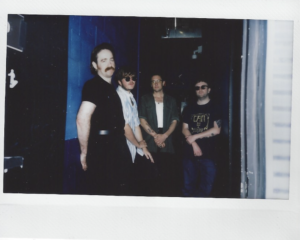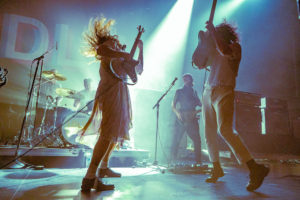
A Separate Peace, Good Will Hunting, Dead Poets Society, The History Boys…I could go on. I love these kinds of movies. Maybe because I’m a recently recovered adolescent who loves boys. Specifically lean, prep-school, Ivy-league boys with retro hair and a wild hunger to make their haphazard marks on the world. To this end, John Krokidas’s Kill Your Darlings delivers.
The film, which debuted nationally to select theaters on October 18th, stars Daniel Radcliffe as a collegiate Allen Ginsberg. There has been much hullaballoo over Radcliffe in this role and whether that skinny little scar on his forehead will ever fade. I got to see such hullaballoo firsthand, in 2011, as a Columbia junior who happened to be crossing College Walk [Vampire Weekend campus] as a mob of Twittering (literally) girls followed the diminutive Radcliffe and his film crew as they marched up the steps to Low Library.

Nostalgia is an effective drug. So are amphetamines, which Ginsberg and his young friends, Lucien Carr, William Burroughs, and Jack Kerouac, partake of regularly throughout the film. They do other boyish things such as go to jazz clubs, drink heavily, compose poetry, and fall in and out of love. All of it works for the film, which is a true coming-of-age story that gets hurried along by a sensational murder.
Historians often point the 1944 murder of David Kammerer as the point of liftoff for the Beats: a radical break in their lives that propelled their radical artistic achievements. The movie starts with Ginsberg visiting Carr in jail, telling him something he doesn’t want to hear. It then goes back and traces the relationship, which begins when Ginsberg hears a Brahms melody coming from Carr’s dorm room, and ends when Carr stabs Kammerer, an older man who has long been obsessed with him, and dumps his body in the Hudson. In between, the at-times icy, at-times nearly combustible Carr (played excellently by Dane DeHaan) introduces Ginsberg to a world of uninhibited delights.
Krokidas infuses the film with fresh details, which he explicated to a happy audience at an October 20th showing at Sunshine Landmark Cinema on the Lower East Side. He intended the rock-heavy soundtrack to be anti-period; songs from the likes of TV on the Radio and the Libertines touch a rebellious nerve in a way that jazz simply cannot. Another nice touch is an old-fashioned subway map that marks each trip the boys take from Columbia down to the Village. The transitional journeys mirror their departure from mass products of the Old Guard to standard-bearers of the new.
Radcliffe does a fine job with young Ginsberg, never once betraying a hint of the burden of his own stardom or of the poet’s. He is loyal to the naïve Jersey boy awakening to experiences for the first time; experiences, it would be easy to assume, that Radcliffe himself was exposed to at a much younger age. Because of this newness, we are willing to go along with an old story, albeit one that falls into my favorite genre: nostalgic boy movies. The nostalgia and the grisly true-crime subplot can only take the film so far. It is the ache and the angst, the torture of falling in love and finding one’s voice, and the talent of young actors that lends the film its strength and its charm. Its most necessary quality, vulnerability, carries it through to completion.
It is also appealing to those with a special connection to this city and its cultural history. From Columbia’s mahogany desks to Riverside’s iron railings, to the smoky dens of Christopher Street, it’s an eye-pleasing tribute to New York in the days that the arts scene was confined to Manhattan – before the writers found Brooklyn.
Who Should Watch: Campus lit and film fangirls/boys, Beat lovers, college students
Who Shouldn’t Watch: people who really love Harry Potter, but have no idea who the Beats are









